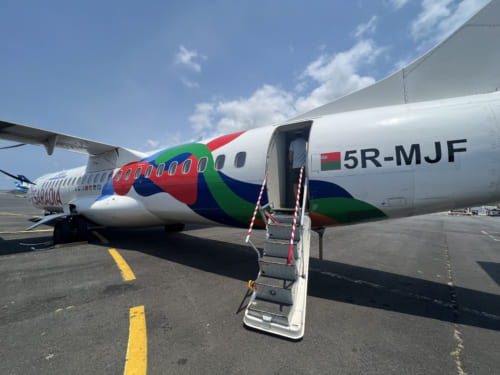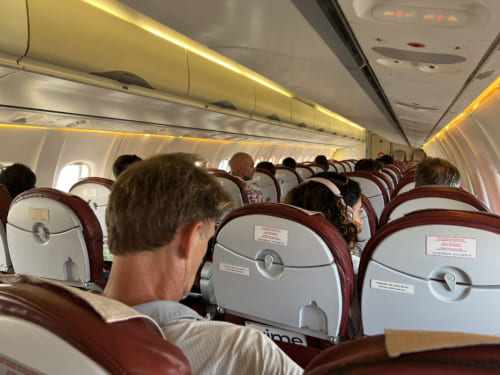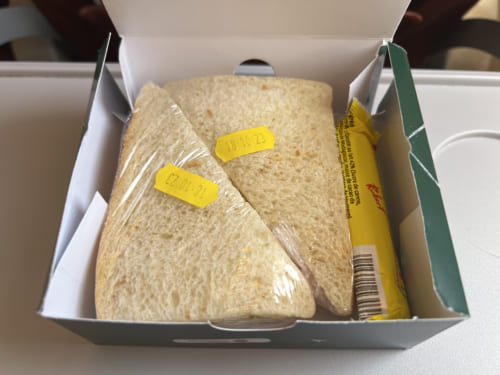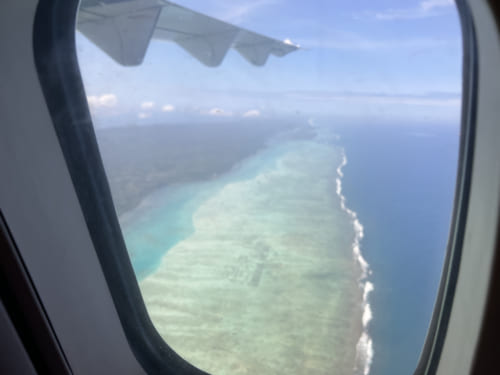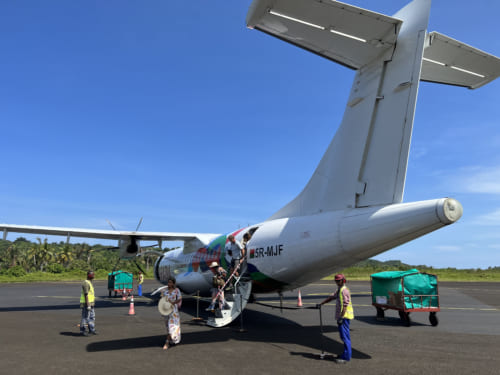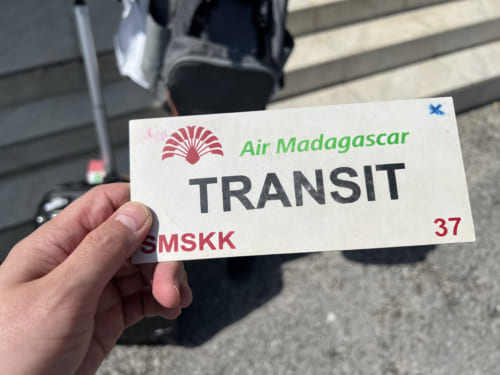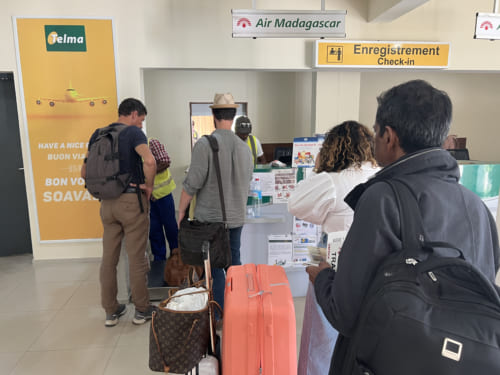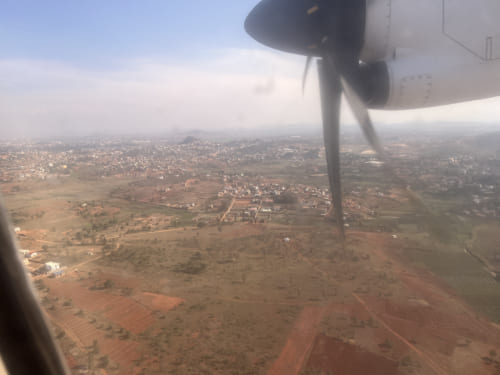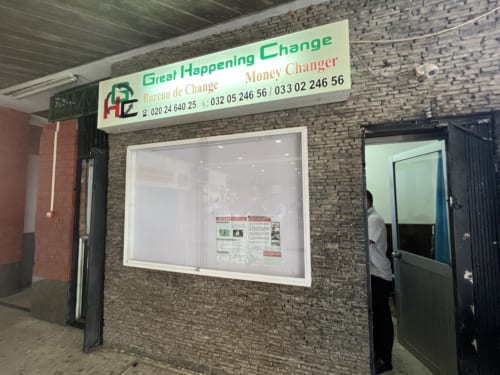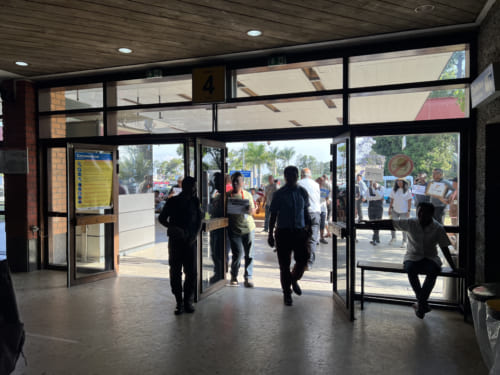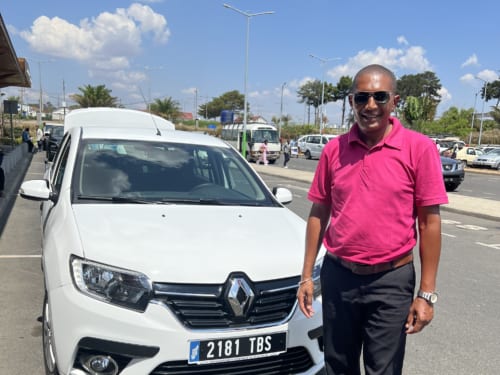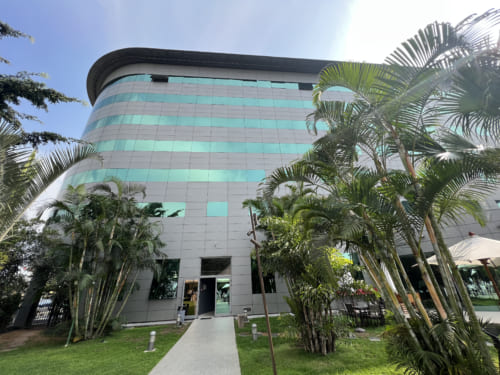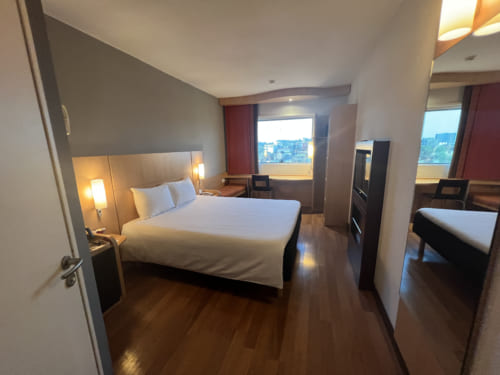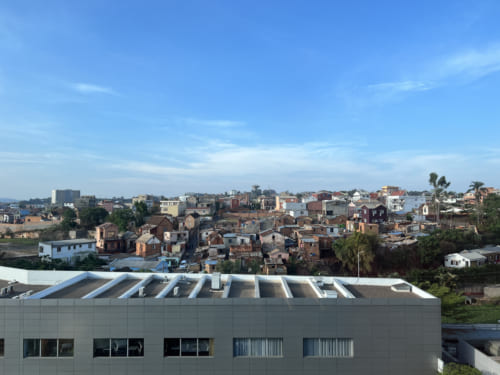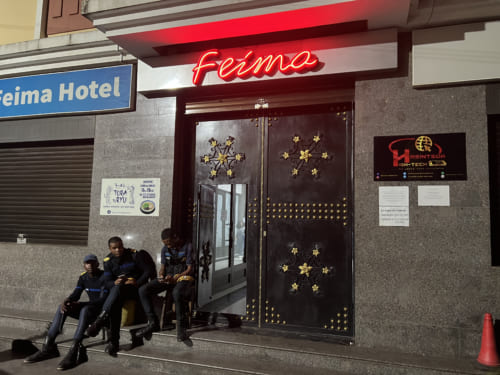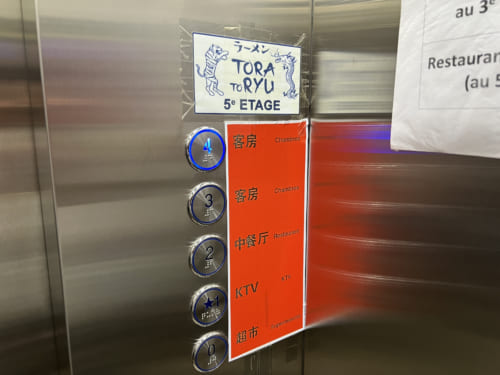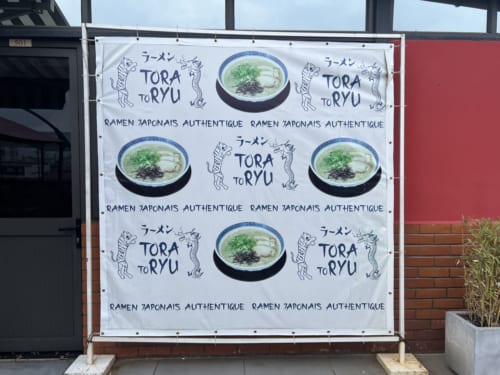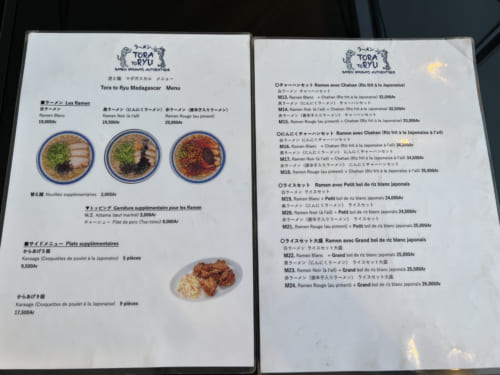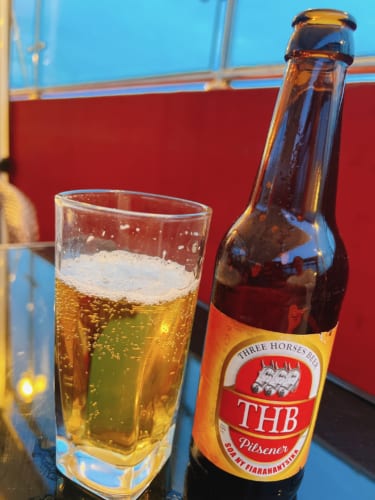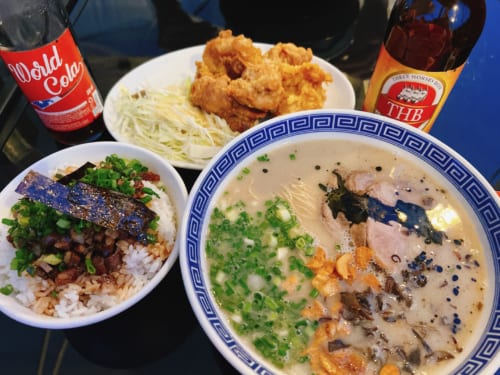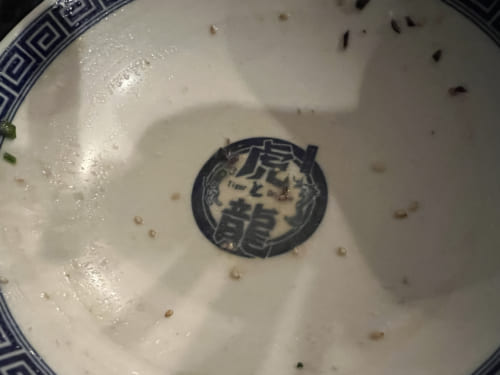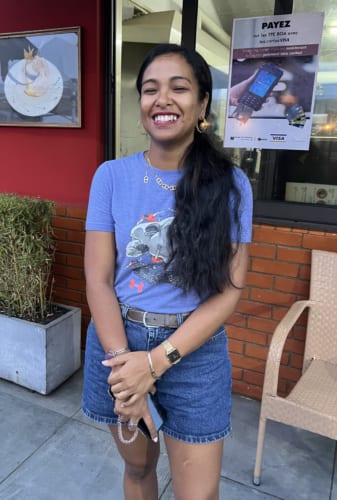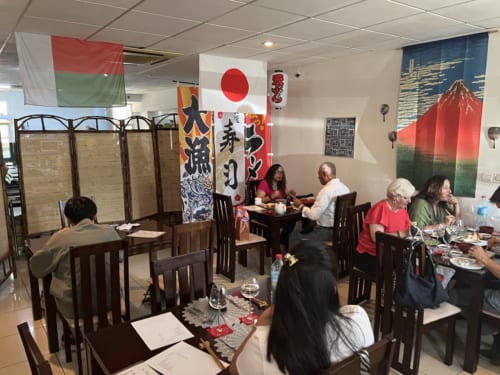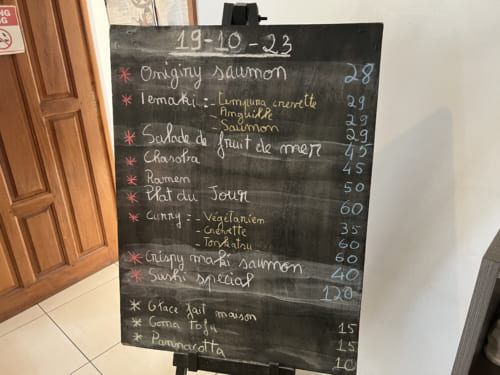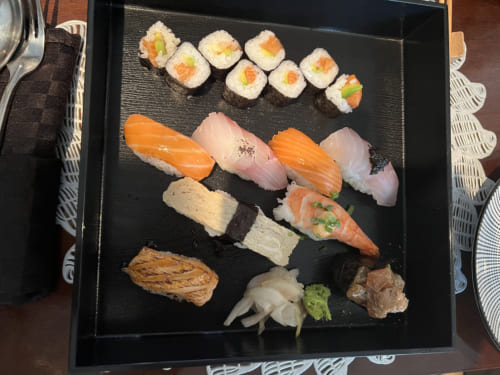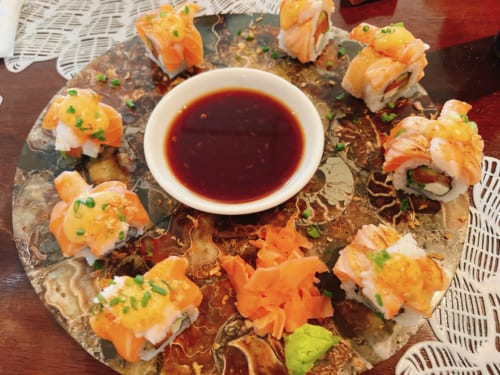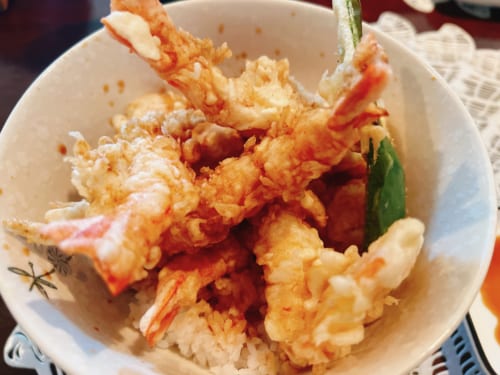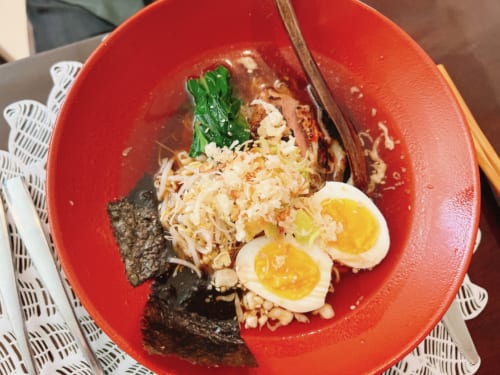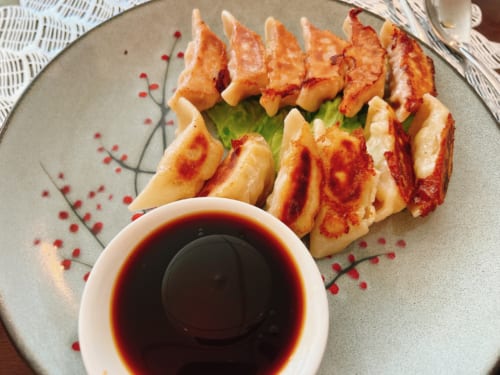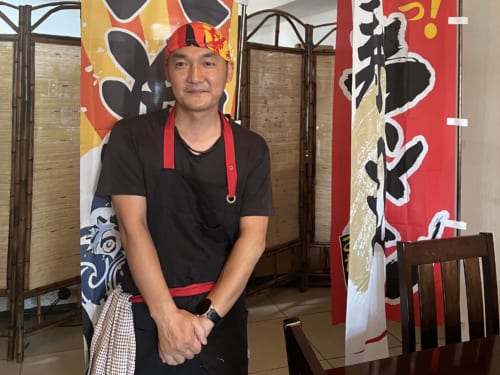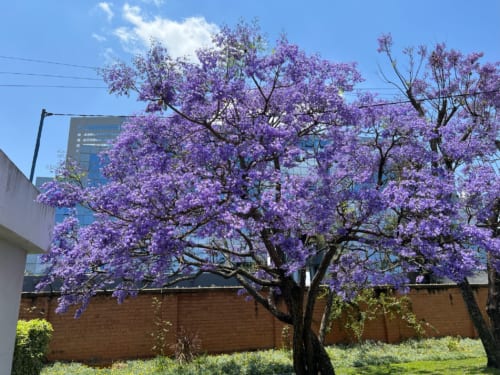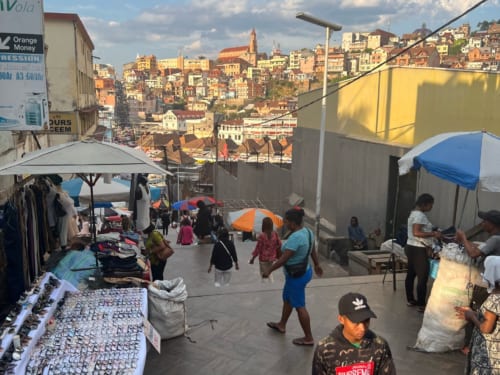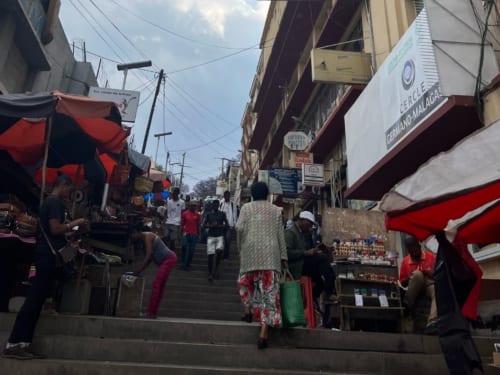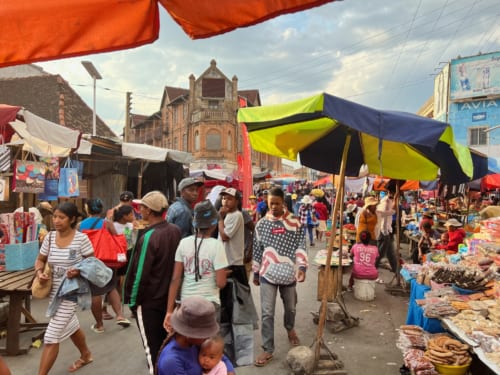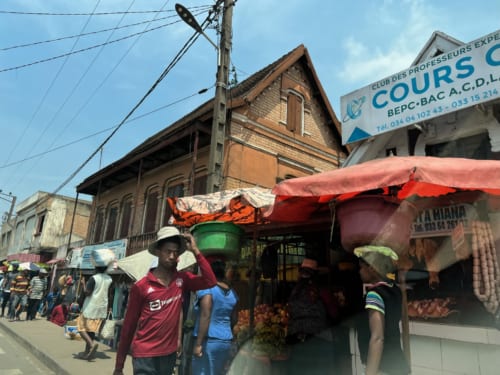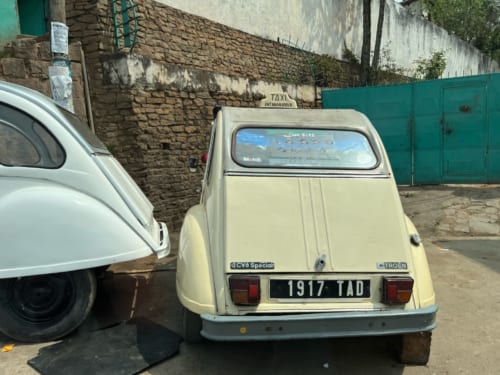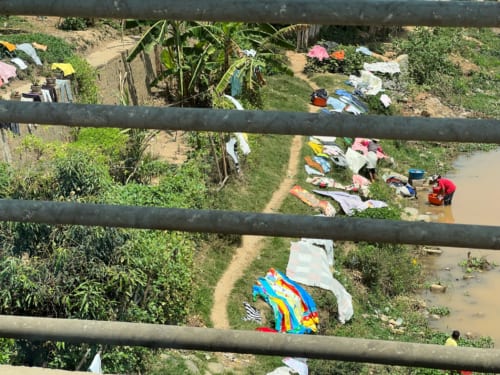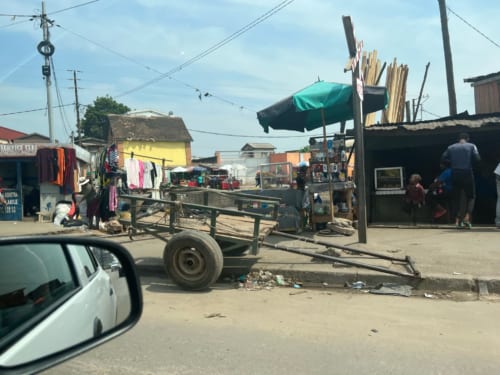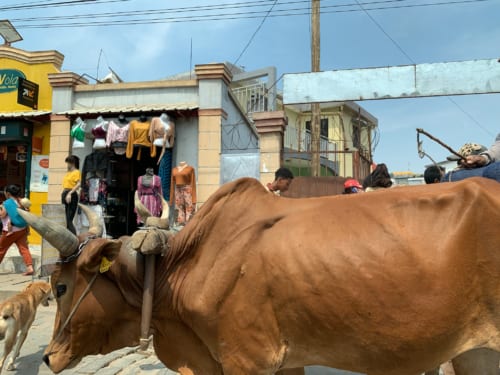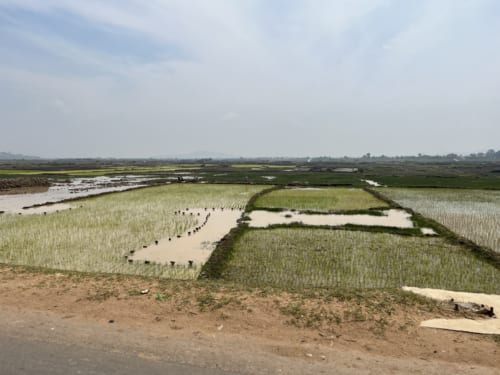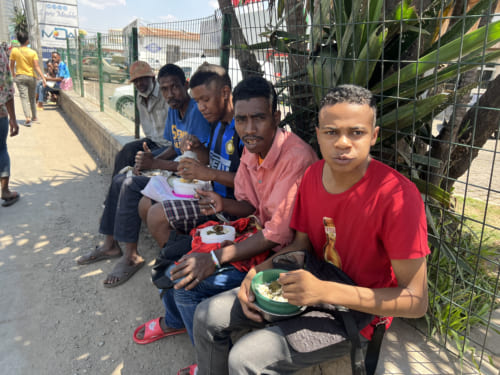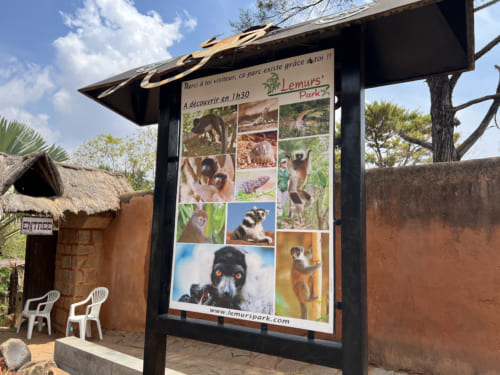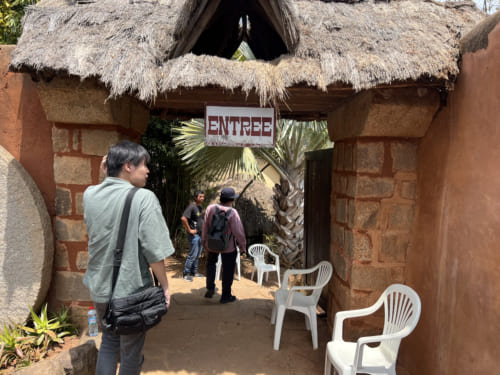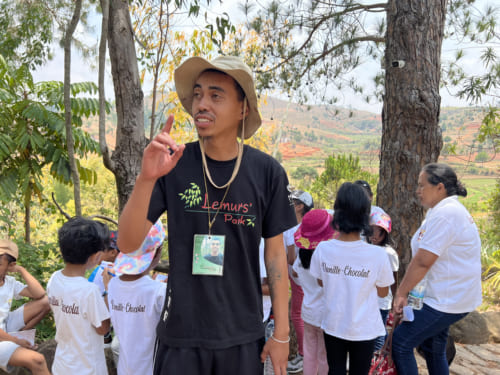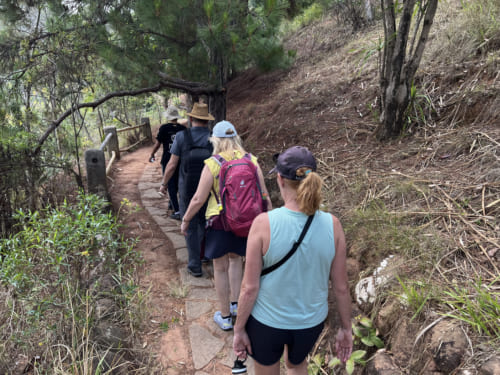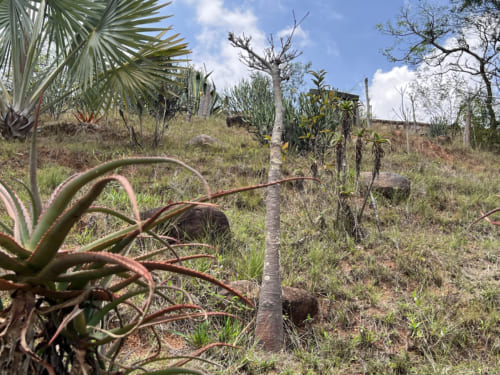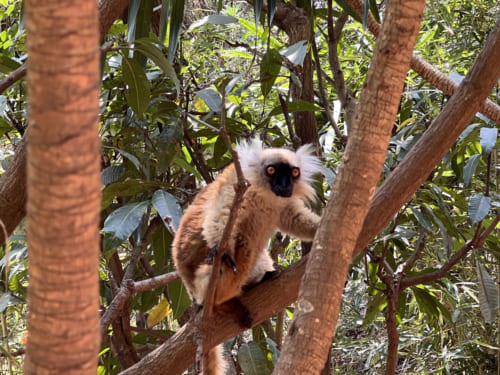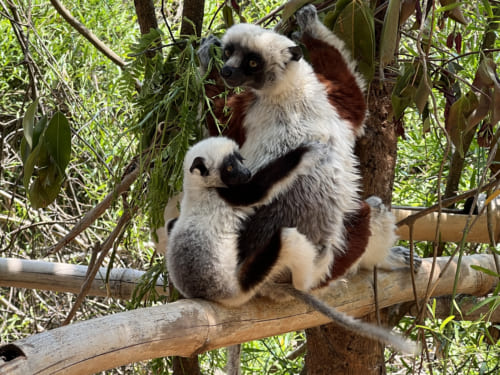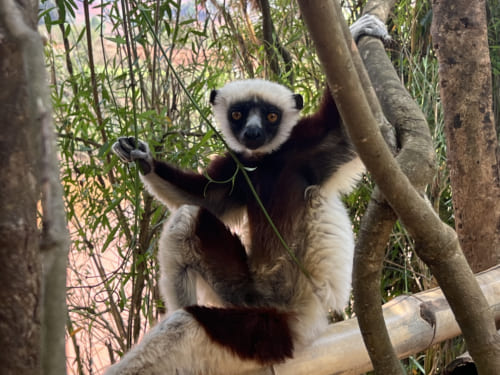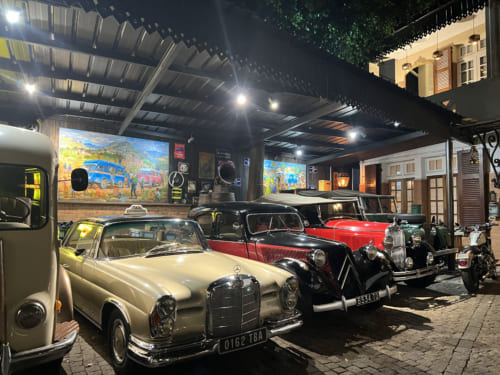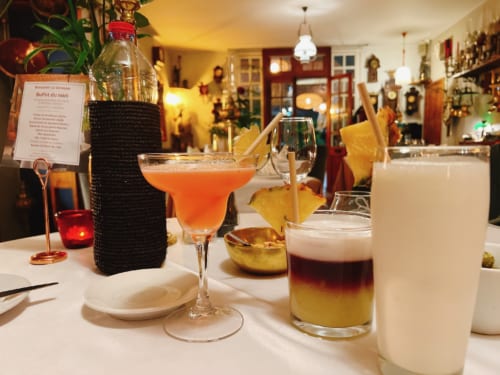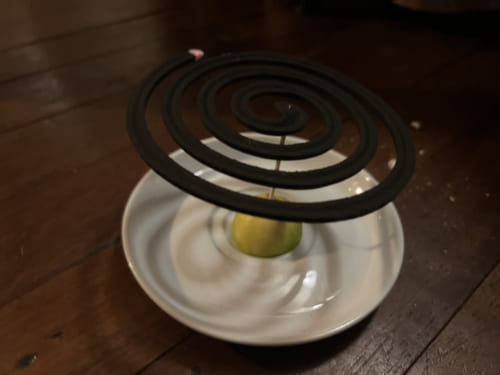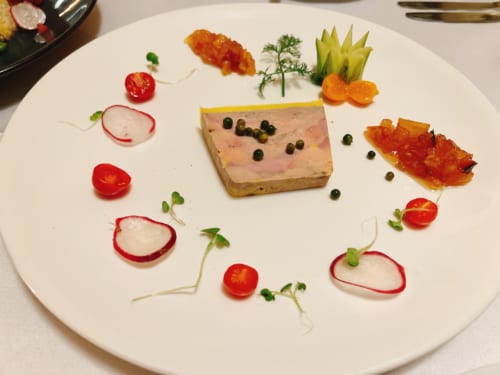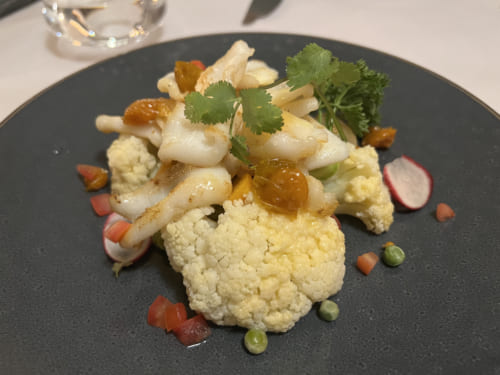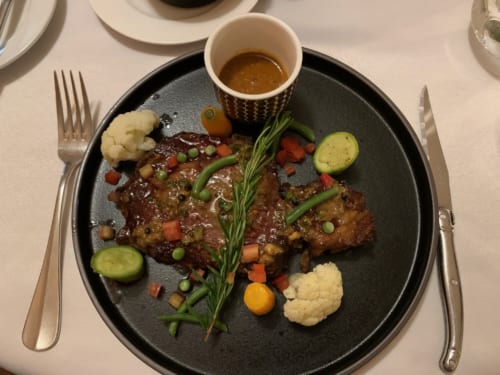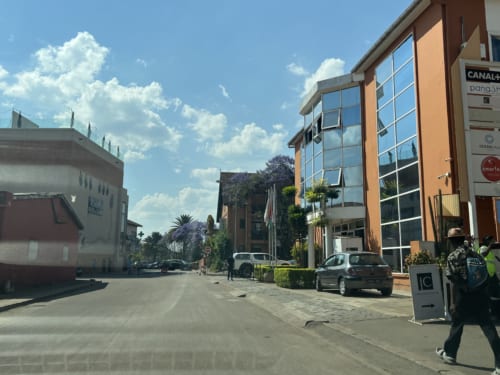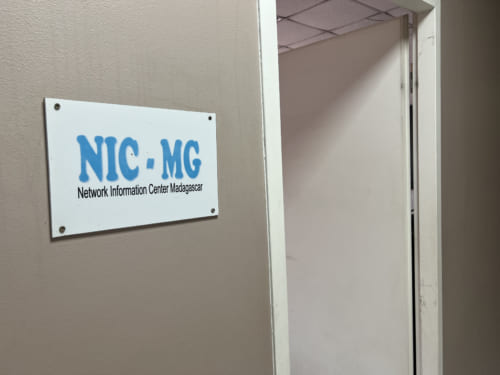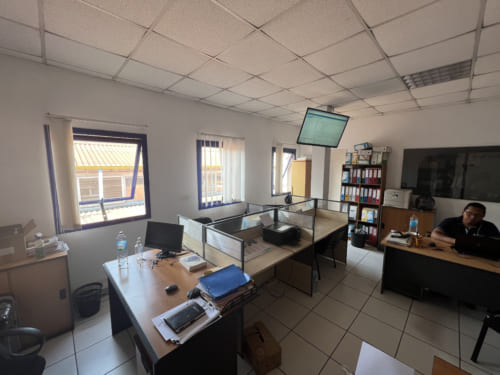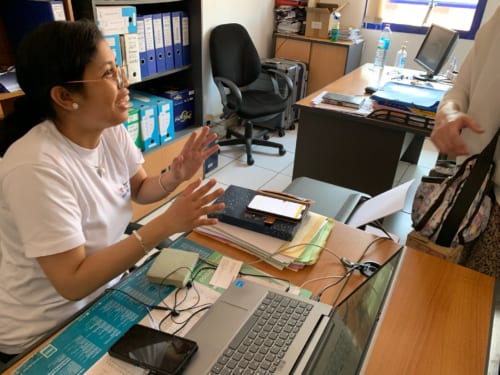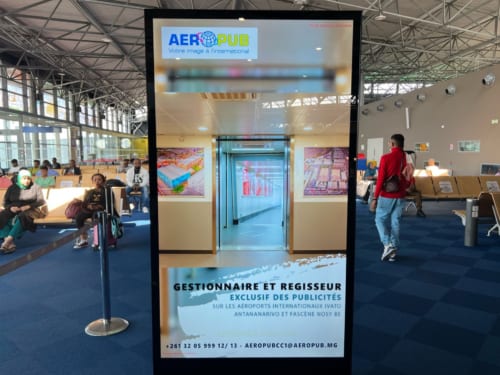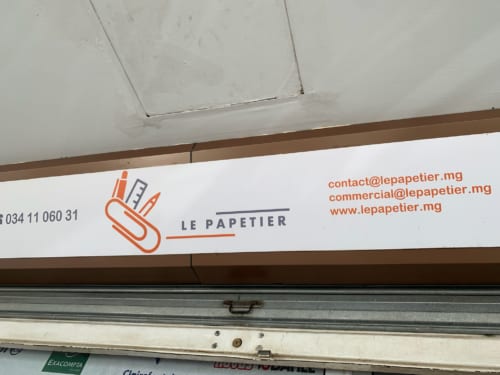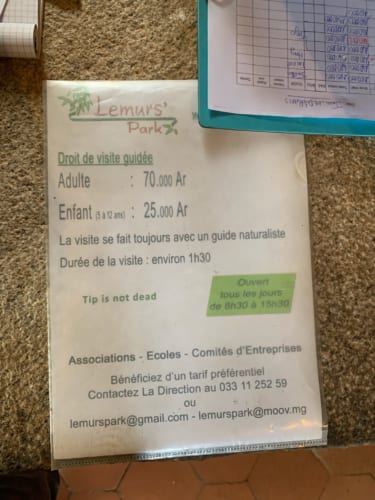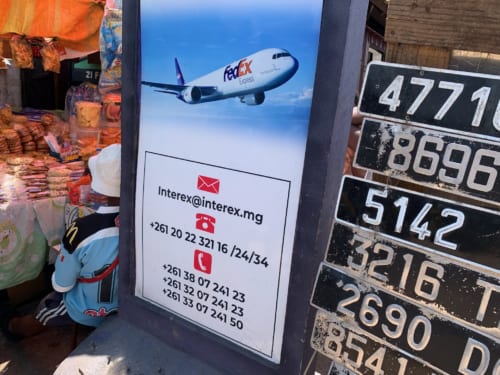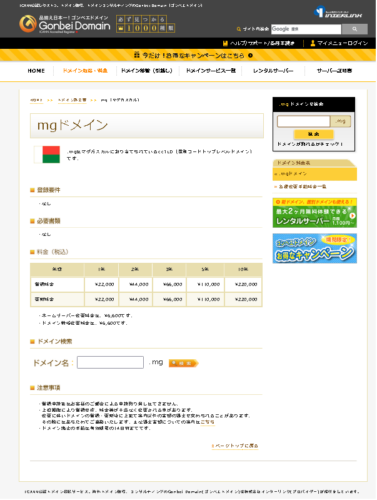Madagascar is located in the Indian Ocean, about 400 km southeast of the African continent. With a land mass of approximately 59km², it is about 1.6 times bigger than Japan, making it the fourth largest island in the world. 80% of the flora and fauna are unique, due to the island being cut off from the African continent for over 80 million years. Not only is it the world’s largest producer of vanilla, but because of its historical link to France, visitors can enjoy authentic French cuisine, as well as Japanese ramen noodles. On this Domain Island Tour, our team members set out to explore the various attractions of this unique island, including its food culture and flora and fauna. The ccTLD for Madagascar is “.mg“.
◆Where is Madagascar?
Madagascar is located in the Indian Ocean, 400 km off the east coast of Africa, on the western edge of the Indian Ocean. It has a population of 28.92 million and the capital is Antananarivo. The local currency is the Malagasy Ariary (MGA). Madagascar’s official languages are Malagasy and French.
= Table of Contents =
◆The 4th Largest Island in the World – Just 15.5 Hours from Japan
◆Kobe Trained Yola’s Ramen Restaurant & Japanese Owned Japanese Restaurant
◆See Madagascar By Car, Unsafe Markets & Madagascar Miscellaneous
◆Meeting Lemurs Unique to Madagascar
◆The Food of Madagascar – Cheap and Delicious French Cuisine
◆Visiting the Registry and Finding “.mg” Around Town
◆How to Purchase a SIM & Test the Internet Speed
◆The 4th Largest Island in the World – Just 15.5 Hours from Japan
Flights from Japan to Madagascar travel via Réunion, Ethiopia, Mauritius, Johannesburg, Paris etc. We chose to go via Réunion because of its cheaper flights and shorter travel time. We flew 6.5 hours from Haneda airport to Bangkok, 7.5 hours from Bangkok to Réunion, and then 1.5 hours from Réunion to Antananarivo, the capital of Madagascar. We traveled on Air Austral, Corsair International and Madagascar Airlines for a total of 15.5 hours. On our itinerary we first head to Antananarivo, the capital, via the resort island of Sainte-Marie.
Madagascar Airlines, established in 1962, mainly flies to neighboring African countries and islands in the Indian Ocean, with only three routes going to Europe. Our propeller aircraft, with its narrow cabin, is ready to depart for Sainte-Marie, our next stop from Réunion.
It was just a short flight of 1 hour and 5 minutes, but we were still served a small in-flight meal of sandwiches and chocolate.
Sainte-Marie comes into view. Located in the north-east of Madagascar, this beautiful island is a popular resort destination due to its white sand beaches, turquoise waters, tropical rainforests and wide variety of wildlife.
We’ve landed! We exit the plane via ramp stairs.
Passengers heading to Antananarivo received a transit tag during the flight.
After immigration we pick up our luggage and then check it in again later.
We then board the same propeller plane again. Finally, we begin our 1 hour and 10-minute flight to the capital, Antananarivo.
After some time, we see Madagascar, the fourth largest island in the world, after Greenland, New Guinea and Kalimantan (Borneo)!
We’ve arrived in Antananarivo. First, we stop to exchange our Euro for the local currency. We did this, not at the counter, but in a special room. The local currency is the Madagascar Ariary (MGA).
As we were standing near the airport exit, trying to figure out how we would get to downtown Antananarivo, we were approached by a taxi driver.
His name was Harley. For 20 euros he can take us to our hotel, which is cheaper than the shuttle bus! Harley’s honest personality and fluency in English, despite his French-speaking background, made him a pleasure to deal with throughout the three days we were there.
We arrive at our hotel, Ibis Antananarivo Ankorondrano, after a 30-minute drive from the airport. There are supermarkets and restaurants nearby.
Rooms are compact but clean and include air conditioning, a TV, minibar, etc. There is also free Wi-Fi.
Our room had a panoramic view of the city. It’s a quaint city, full of hilly and colorful streets. The power grid in Madagascar is not fully developed, so we had occasional power outages, but otherwise we had no issues during our stay.
◆Kobe Trained Yola’s Ramen Restaurant & Japanese Owned Japanese Restaurant
After hearing that there is an authentic Tonkotsu Ramen restaurant in Madagascar, we hopped in a taxi to Feima Hotel. Apparently, it’s a rooftop terrace restaurant in this hotel.
It’s called “Tora To Ryu”, which means “Tiger and Dragon”. We exit the elevator at the 4th floor and then take the stairs to the rooftop.
Here we are. We are greeted by a delicious aroma.
Japanese menu.
First, let’s start with a THB (Three Horses Beer – 6,000MGA), a local Madagascar beer which has three horses’ heads on the label.
Our order: Black Ramen (19,500 MGA), Karaage fried chicken (9,500 MGA), Chasu Pork Bowl (13,500 MGA) and Madagascar’s World Cola (6,000 MGA). It looks exactly like Tonkotsu ramen you’d find in Japan. They use flour from France to make their noodles.
It was so delicious that we finished it in no time! This Japanese Tonkotsu Ramen, served all the way here in Africa, was incredible.
This is Yola, who trained in Kobe, Japan. Yola learned various recipes, customer service skills, etc., during her 20 days of training and the returned to open her own restaurant in November of 2022, becoming a franchise store to “Tora To Ryu” restaurants that operate in Kobe, Amagasaki and other areas of Japan.
The next day, we visited “Shizuku“, a Japanese restaurant run by a Japanese citizen. The restaurant is packed at lunch time.
Near the entrance, we find the menu for today.
On most Domain Island Tours we get the chance to eat some sushi. This time too, we order the Sushi Platter (70,000 MGA). It was all delicious!
Colorful California Salmon Rolls (98,000 MGA).
Crispy Tempura Bowl (82,000 MGA).
Traditional Shoyu Ramen (50,000 MGA).
Everything is so good we can’t help but keep ordering different dishes. Gyoza dumplings (23,000 MGA).
And finally, Tonkatsu Curry (60,000 MGA). This dish was so good that it almost made me want to open a specialty restaurant for it!
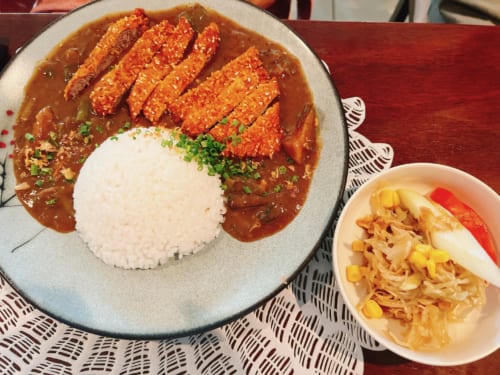
The owner, Mr Shoji. After working as an exclusive chef in Madagascar for some time, he later opened his own restaurant. He has been living here for 6 years now. We could enjoy delicious authentic Japanese cuisine in Africa!
◆See Madagascar By Car, Unsafe Markets & Madagascar Miscellaneous
Jacaranda, the “cherry blossom” of Africa. They usually flower at the end of October, but when we visited in mid-October they had already begun to bloom. Their bright purple flowers are very beautiful.
Antananarivo is a city with many hills and stairs. Going down these stairs we find a market. The Office de tourisme, a tourist information center located in the gardens of Antaninarenina, organizes walking tours of Antananarivo, but they avoid the market due to safety concerns. We, though, decided to take a look.
Street stalls line both sides of the stairs leading to the market.
This is the market center. It’s very lively. According to the Ministry of Foreign Affairs of Japan, Madagascar is one of the poorest countries in the world and has long had issues with muggers, pickpockets and purse snatchers. Crime in general has been increasing and public safety is deteriorating. So, please be careful when exploring Antananarivo, and not just at the market.
Leaving the market, we now decide to take a tour around Madagascar by car. We’re off to “See Madagascar by Car”.
Women transporting various things on their head.
Citroën 2CV taxi. The Citroën 2CV is a French front-wheel drive passenger car released in 1948. We saw many of these cars actively being used as taxis.
After washing clothes in the river, they are then laid on the ground to dry. The typical annual income in Madagascar is around $540. It would be difficult for a household to buy their own washing machine because they cost around $300 at the cheapest.
We see less and less street stalls the further we get from the city center.
We go through different parts of the city. We see not only people and cars, but also dogs, chickens, pigs, cows and goats that run free. These cows are “Zebu cattle”, which can be used for both labor and food. We keep driving, on our way to see some lemurs, an animal native to Madagascar.
Like in the Commonwealth of Dominica, there are no traffic lights in Madagascar.
After driving for a while, the scenery changes to a rural landscape. Rice is the staple food of Madagascar. It’s so deeply rooted in local food culture that to “eat a meal” is expressed as to “eat rice” (mihinam-bary). The annual rice consumption per person is around 120kg, more than twice that of a Japanese person. Our taxi driver Harley says, “It must look just like Japan, right?”.
Also, now that I think of it, the locals we saw eating lunch outside the Japanese restaurant Shizuku were eating rice.
◆Meeting Lemurs Unique to Madagascar
We arrive at the “Lemurs’ Park” after driving an hour out of the city. The guidebook said 30 minutes but traffic held us up.
Admission costs 70,000 MGA per person.
The park guides explain everything thoroughly in English.
We enjoyed a tour of the park together with tourists from the US, Canada, Germany and other countries.
The thin, short tree in this photo is a young Baobab tree, a national symbol of Madagascar. It will be interesting to see how big it will grow in the future.
Our guide suddenly stops and we all simultaneously turn our cameras towards a lemur up ahead.
All 107 lemur species are unique to Madagascar.
We got to see many different kinds here at the park. This seems to be a mother and baby. How cute to see them snuggling together!
They even posed for the camera. It felt unbelievable to be able to see them up close without cages and bars!
They jump around energetically right in front of us. They have very long legs. It seems to be the season for raising their young.
Lemurs’ Park is home to nine species of lemurs and around 70 plant varieties. As it’s only around an hour from Antananarivo, I’d recommend it for those who are unable to visit nature reserves farther away.
◆The Food of Madagascar – Cheap and Delicious French Cuisine
Our taxi driver, Harley, told us about a French restaurant called Hotel Restaurant La Varangue. It seems to be a pretty fancy place and has a number of classic cars lined up in front of the restaurant. Being a former French territory, there are many French restaurants in Antananarivo city.
For drinks we ordered mineral water (10,000 MGA), a pina colada (10,000 MGA) and two cocktails of the day (60,000 MGA).
Glancing at the floor, we saw a Japanese mosquito coil… We were grateful for it because there are many mosquitoes at night here.
Next, our main meal. The Foie gras terrine (60,000 MGA) is elegantly and beautifully presented. Richly flavored, it rivals anything made back in France.
The warm squid salad (50,000 MGA) is chewy and exquisitely seasoned.
Charolais beef steak (354,000 MGA). Yes, that is over 10,000 JPY, or $77 USD. This must be a pretty fancy menu item for Madagascar, where prices are generally low. With the exception of Charolais steak, one of Madagascar’s attractions is its relatively inexpensive French cuisine.
◆Visiting the Registry and Finding “.mg” Around Town
The registry that manages the “.mg” domain is based here in Madagascar, so we decided to pay them a visit.
In the grounds of a slightly more upscale shopping mall we found a building that not only contains the Radisson Hotel but also “NIC MG”. It seems to be on the second floor.
We walk up the stairs to the entrance.
Inside we found three members of staff working that day. When we explained that we were visiting from Japan on a “Domain Island Tour”, they kindly invited us in.
Just as I was about to speak with a female staff member, worrying about whether my English would be understood, she said to me “konnichi wa!” (hello) in Japanese! Apparently, she loves Japanese anime and through that she was able to master Japanese. It was cute how she spoke and acted just like a Japanese otaku girl!
Let’s take a look at various “.mg” we found around town. We saw it used on Aeropub’s static and dynamic advertising panels at the international airports of Antananarivo and Nosy Be.
On a sign for La Papetier, which sells office supplies.
Lemurs’ Park also used “.mg”.
Used by Prod’Hyg, which sells cleaning and hygiene products.
FedEX, the world’s largest air cargo carrier.
◆How to Purchase a SIM & Test the Internet Speed
We got a measurement of 9Mbps in Antananarivo and we had no issues with the internet while we were there. Please refer to this information if you plan to travel overseas. Incidentally, Ubigi was too slow to be useful.


